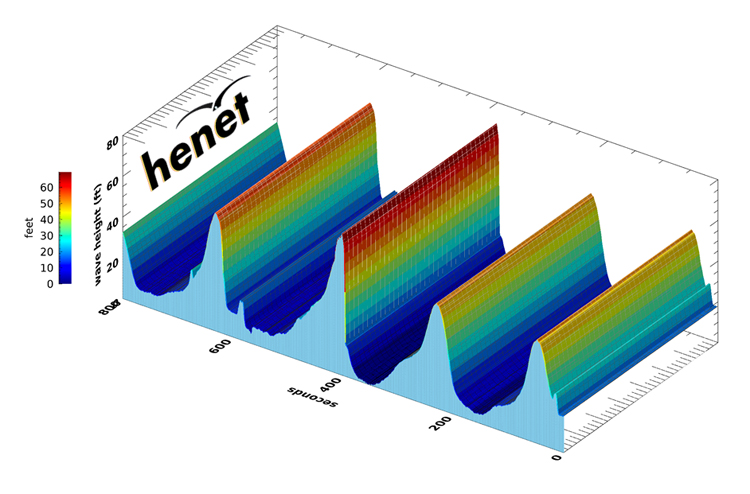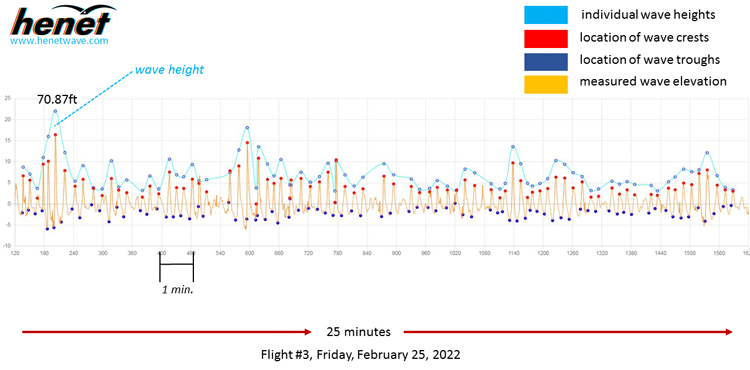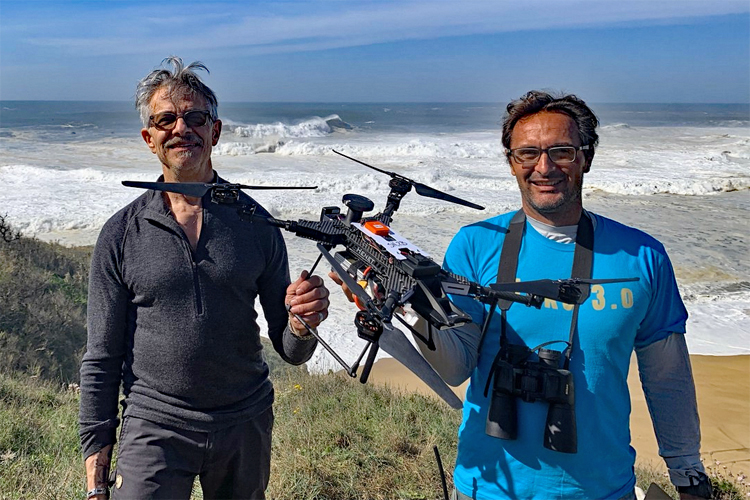How do you measure wave height? And how do variables like photo angles, tides, and the human body get into play when assessing a world record-breaking surfing wave?
Measuring surfing waves is a topic as old as almost the sport itself. Surfers tend to brag about their skills and prowess by the size of the swell and ocean ripples they tame.
It's part of wave riding's show-off nature. But that could be about to change - at least at a more advanced and competitive level.
Meet Teddy Allen and Milan Curcic.
They are the co-founders of a surfer-inspired start-up that aims to put an end to dubious interpretations, fruitless debates, and subjective analysis.
Henet Wave wants to be the objective and accurate answer to all controversial big wave surfing claims and dilemmas.
Allen is a meteorologist; Curcic is a scientist and algorithms expert. They both surf.
One day they came up with an ingenious technology capable of measuring big and small waves, vertical or sloping walls of water.
Assessing the size of waves has become critical within big wave surfing because there's too much at stake - money, reputation, glory, and status.
The professional surfing circuit developed a carefully fine-tuned formula to calculate the height of big waves breaking in Nazaré, Jaws, and other high surf arenas.
However, there's always a degree of uncertainty and subjectivity to it.

Drones as Aerial Surf Buoys
Henet Wave wants to put an end to the heated discussions that fuel social media outbursts and often put athletes against athletes.
So, the entrepreneurial duo teamed up with mechanical engineer and drone expert Thomas Alberts to create a patent-pending aerial buoy.
"Henet was conceived late one night in 2020 in an office overlooking Soup Bowl in Barbados," Allen and Curcic explain.
"While procrastinating with other more important things, an article emerged that debated the XXL female wave of the year entry."
"The article debated if the surfer needed to complete the ride in order to win the award."
"To us, the broader debate should have been the ability to differentiate between a 73-foot wave and a 69-foot wave using subjective methods."
And so Henet was born to measure waves with objective data using a technologically advanced aerial buoy.
"In Egyptian mythology, the pelican - henet - is the goddess associated with the afterlife," the drone developers add.
"The ancient Egyptians thought that the henet could provide a safe passageway in the underworld of the unknown."
"Today, henet guides surfers into the new world of purely objective real-time XXL wave measurement."
It sounds poetic, but the team has a simple and clear dream.
All three Ph.D. scientists want to be the first to measure the 100-foot wave using the specially designed drone.
The first tests took place in Praia do Norte, Nazaré, Portugal.
"We traveled to Nazaré on very short notice to measure waves during the XXL February 25 [2022] swell and were fortunate to work alongside Andrew Cotton."
"He provided valuable insights that helped improve our operations and motivate future work."
"Unfortunately, due to the terribly bad timing of a malfunctioning battery charger, we were limited to flying during the morning hours only. Then again, on the next day, waves dropped to 15-25 feet."
"A lot was learned from that trip, and we're looking forward to returning next season to measure more XXL waves."

Measuring the Accurate Size of a Traveling Wave
It all started with a smoothed wave height time series.
The first thing Henet did was to apply a pseudo-x-axis to spread out the wave height point data for visualization purposes.
"Since we measure point data, we extend wave height at one point across the wave to compare heights from different waves," note the entrepreneurs.
"Then, we took a sample of our smoothed wave height point data from Nazaré and animated it in 3D using a pseudo-x-axis, i.e., extending the x-axis from point data for display purposes."
But the outcome will be even more surprising and insightful.
The ultimate goal is to deploy an array of drones along a transect to produce a real 3D representation of a wave tapering from the peak.
The unmanned aerial vehicle (UAV) will capture a three-dimensional "photo" of waves from observations recorded from the buoy system flying in the sky.
Henet's wave height algorithm already detects troughs and peaks from raw drone data and automatically calculates wave height.
The algorithm determines water elevation (orange lines), wave trough locations (blue dots), wave peak locations (red dots), and actual wave heights (light blue dots).
The wave measuring technology will be able to deliver data in real-time and even broadcast via live streaming.
The reader could ask, "How will Henet deal with variables like tides, water/land level height, and top and bottom of the wave?"
"None of these uncertainties are factored into the measurement," Henet developers stress.
"For instance, GPS does not account for the height measurement."
"It is only used to help with vertical stability, allowing for accurate telemetry measurements."
"There's definitely a lot of misconception about what is required to measure wave height."
The aerial surfing eye is a custom-made buoy system featuring a semi-protective outer shell.
Although it may not withstand the brunt of a 100-foot wave, it can easily tackle Earth's most powerful sea spray.
Henet plans to continuously improve its hardware and software applications to optimize the system for the 2022-2023 big wave season.
To validate its accuracy, the creators of the surf-related drone will conduct controlled marine-based verification tests at a wave pool in the summer of 2022.
